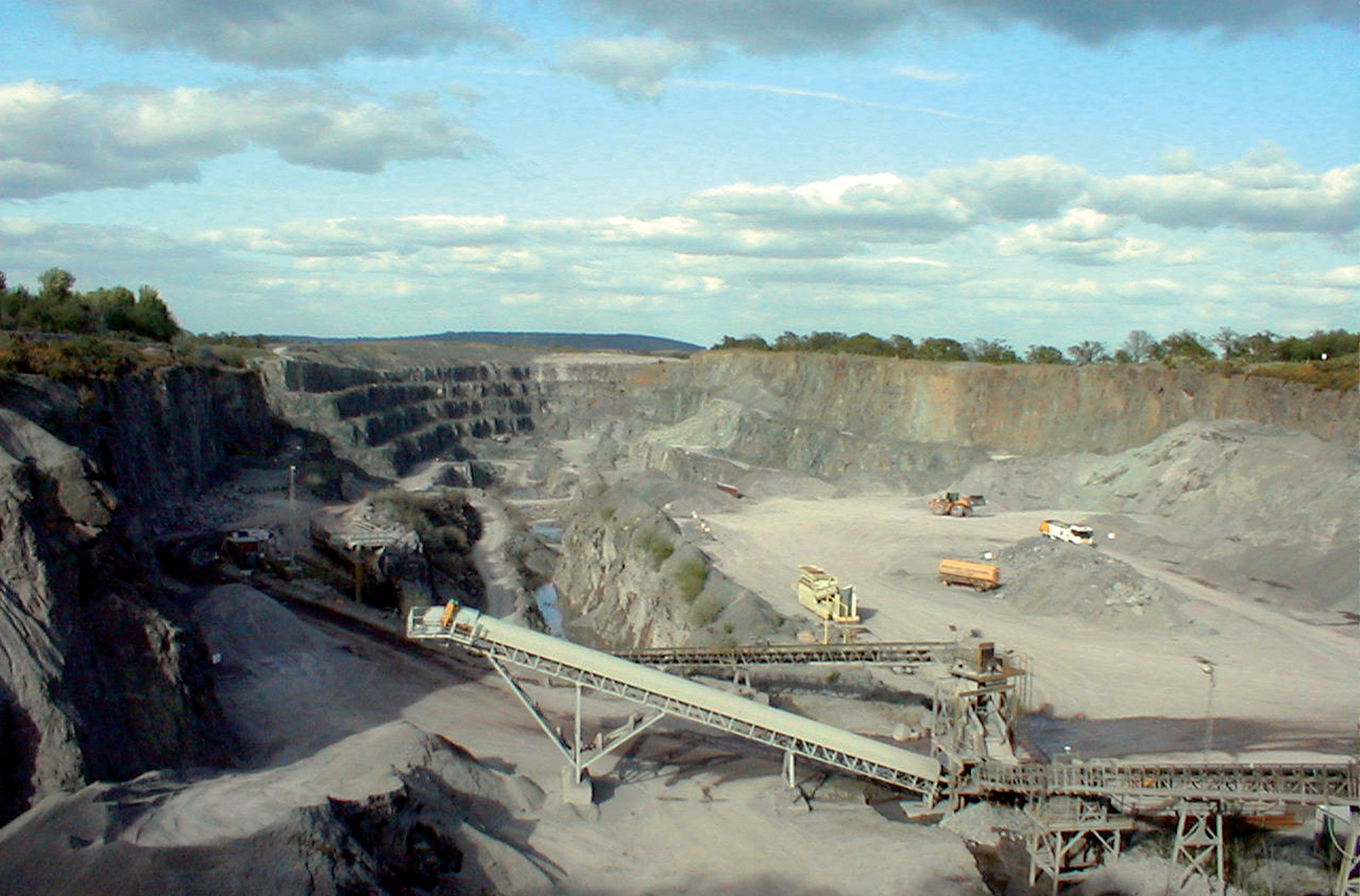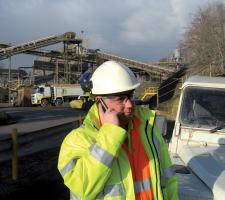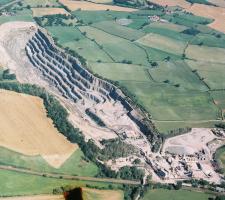
An important gritstone quarry is proving that industry, nature and the community can work in harmony
As peregrine falcons and kestrels soar gracefully overhead, Huw Evans pitches the word biodiversity into the conversation before explaining the birds' feeding habits.
This is
The facility has built up a good rapport with its neighbours, many of whom live in houses with magnificent views and despite its size and position, in most instances, Bayston Hill Quarry is not one of those views, and it is intended it will stay that way.
As Shrewsbury celebrates the 200th anniversary of the birth of its greatest son, Charles Darwin, Evans and his work colleagues have been celebrating receiving planning permission to extend the quarry, and have been busy planning every detail of the biggest project of his career, and one of the biggest investments by Tarmac. It will eventually result in a £32million (€34million) investment in the quarry, more than doubling its size by taking in extra land to the south. The present quarry covers 133ha and this will rise to around 300ha.
This will be done progressively, but Evans is adamant that a massive bund required for landscaping purposes and to hide the quarry from nearby residents (as now) will start in the next few months and be completed in a year.
While planning permission allows the company three years to complete this 1km long, 30m wide 'mini-mountain' Evans is eager for it be completed quickly so that selective planting and natural vegetation can establish itself.
Biodiversity
The bund will be built 100m back from the existing natural escarpment using the topsoil, which will be stored until needed, along with the underlying spoil and other materials from the existing quarry. Evans and his team have already drawn up a programme of works and a special new haul road will be constructed from the quarry to assist in construction.
"I am planning for work to start in March and we will complete it as quickly as possible. After all it will mean some disruption for the communities that live next to what is now an attractive landscape. We want to get the bund built quickly for their benefit, and also for ours," explained Evans.
"If we do this, there will only be one year of disruption and we can get on and plant it. Then it is done. As a business, we get on well with the community, and when the bund is complete we can start our work hidden from view. Everybody wins." The panorama from the quarry's viewing platform and peripheral roads is spectacular. To the north is Shrewsbury; to the west, a few hundred metres away, is Bayston Hill (where Evans lives); to the east is the landmark Wrekin hill and to the south are the South Shropshire Hills.
Bayston Hill Quarry is a busy place, producing mainly one size (14mm) greywacke gritstone with a high polished stone value. The quarry, bought by Tarmac from a private owner in 1972, produces some 850,000tonnes a year of aggregates used mainly for roads. Its two asphalt plants produce 250,000tonnes each year of coated materials, while a washing plant produces about 60,000tonnes per year of washed aggregates. A small concrete plant is also sited in the quarry.
About half of the output is delivered within the Shropshire area and the remaining output is used country-wide on major road projects. However, such is the gritstone's quality, that it has also been exported, notably for surfacing the Bahrain F1 race track in 2004 and for Abu Dhabi's new F1 track, which will see action later this year.
The quarry has the largest reserve of gritstone in England and Wales, and the extension will give an estimated 45 million tonnes or a quarry life of 55 to 60 years.
The quarry was originally set up to supply ballast for railways, and an existing nearby rail link is still open, but the line into the quarry was closed in the 1980s. When the quarry extension is completed (the company has six years to do this) trains carrying up to 2,000tonnes will again be used to distribute material from the quarry.
Local request
"We estimate that the bund will take about 1.2million m³ of material to construct," said Evans, returning to the plans for the extension. But what is happening wasn't decided by Tarmac or the planners - it was decided by the local people who chose what they want to see planted. The plan includes native species such as oaks along with arable and grassed areas.
"As a company we have close links with all concerned with the quarry and obviously this includes local communities, local councils and the county council and its minerals officer and team," said Evans. Groups of geologists and schoolchildren are regular visitors to the site where they can clearly see the rock strata in the 90m deep quarry. With the extension, the quarry will be deepened by a further 80m following hydrogeological surveys to prove no adverse effects on the surrounding countryside.
Evans is well aware of Tarmac's responsibilities, and is also proud of the company's record: Bayston Hill was one of the first Tarmac quarries to run a pilot biodiversity scheme. "Biodiversity is a massive point in planning applications. Years ago a planning application was little more than a couple of pages: our recent planning application ran to many pages. Times certainly change, and for the greater good," he said.
"It took us six years to get to the planning committee stage. During that time we were obviously working very hard on our proposals and there was a lot of engagement with the local community through our quarterly liaison committee meetings. This is made up of Tarmac, the council and local community representatives, and it discusses any complaints or issues and what is going on with the quarry and what we are planning to do.
"The new quarry will be getting closer to local communities so we have had a lot of consultation with residents. We recognise that they will be disturbed while we build the bund but we will keep disruption to a minimum. Ultimately, it will be for their benefit as the bund will shield the quarry and act as a new area of habitat." Evans points to the fact that the site only received one complaint in 2008, which is a good achievement for a site the size of Bayston Hill. The complaint was about blasting and Evans said this is one of the reasons that the quarry blasts in the afternoons.
"I think this sort of record has a lot to do with talking to people about what is going on at the quarry," he said.
Evans lives in the local community, which is obviously a boon to the relationship between the quarry and the local community. But he tries to take this one step further and makes himself available, by phone, to anyone living in the local area so that they can reach him straight away with any concerns.
"We do have a social responsibility - after all we are digging holes in the ground and we do take a lot from the local community and it is up to us to put something back," he said.
















